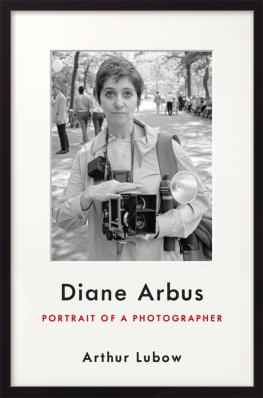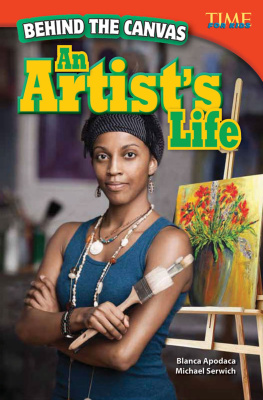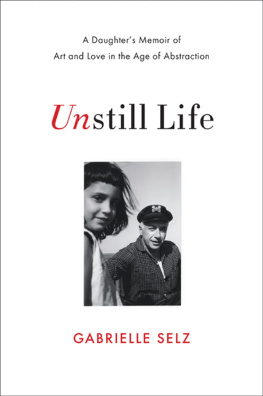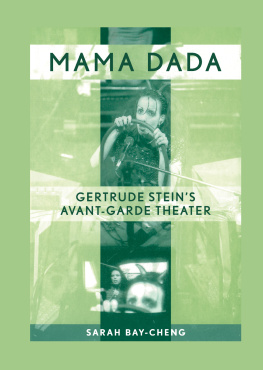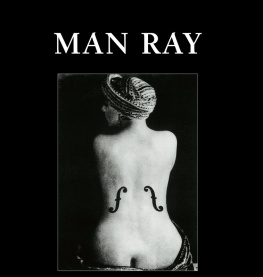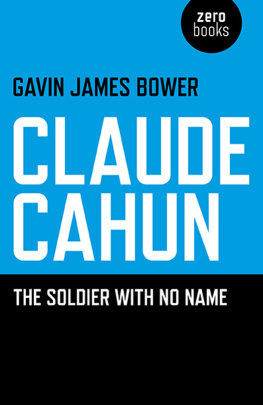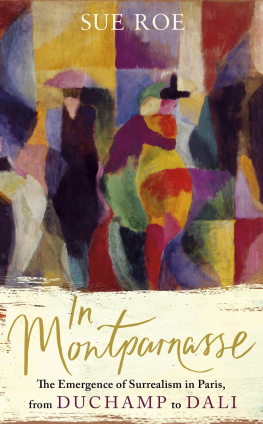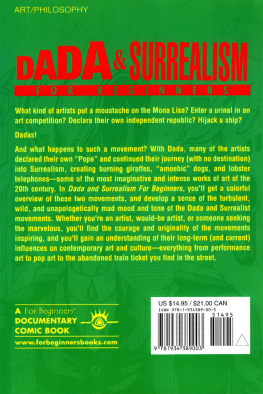MAN RAY

Man Ray
The Artist and His Shadows

ARTHUR LUBOW

New Haven and London
Jewish Lives is a registered trademark of the Leon D. Black Foundation.
Copyright 2021 by Arthur Lubow. All rights reserved.
This book may not be reproduced, in whole or in part, including illustrations, in any form (beyond that copying permitted by Sections 107 and 108 of the U.S. Copyright Law and except by reviewers for the public press), without written permission from the publishers.
Frontispiece: Man Ray and Marcel Duchamp, chess, rue Frou, c. 1955
Frontispiece and all plates (except Portrait of Man Ray by Alfred Stieglitz [public domain]) copyright Man Ray 2015 Trust/Artists Rights Society (ARS), NY/ADAGP, Paris 2021. Used by permission.
Yale University Press books may be purchased in quantity for educational, business, or promotional use. For information, please e-mail (U.K. office).
Set in Janson Oldstyle type by Integrated Publishing Solutions.
Library of Congress Control Number: 2021932186
ISBN 978-0-300-23721-4 (hardcover : alk. paper)
A catalogue record for this book is available from the British Library.
This paper meets the requirements of ANSI/NISO Z39.48-1992 (Permanence of Paper).
For Wendy
CONTENTS
Illustrations follow
MAN RAY
INTRODUCTION

Man Ray and His Shadows
MOST MODERN ARTISTS achieve renown by discovering and exploring a singular new territory: Jackson Pollocks allover skeins of paint, Joan Mirs biomorphic dreamscapes, Piet Mondrians primary-color grids, Francis Bacons agonized blurry figures. Each artist developed a style that became as recognizable as a brand. Man Ray was atypical. His achievement arose from multiplicity, and his reputation rests on a restless investigation into new techniques and ideas. His signature was an avoidance of a signature style. Although atypical, he was not singular. The same could be said of his closest colleague, Marcel Duchamp, and also of their mutual friend Francis Picabia.
These friendships and others were key to Man Ray. Supportive exchanges with fellow artists and enduring bonds with onetime lovers characterize his career. People took to him immediately. They strove to get to know him, undeterredindeed, enticedby his ultimate unknowability. He was a self-made man who had tailored his own image so seamlessly that only at moments of great stress did the inner man seep out.
Approaching Man Ray sideways, through an investigation of his most important relationships, suits this master of oblique strategies. Nothing could be more in the spirit of Man Ray than to transpose one of his ideas into another sphere and, by so doing, to twist it into a suggestive new form. His earliest masterpiece, the painting The Rope Dancer Accompanies Herself with Her Shadows (1916), is composed of large, brightly colored shapes that seem to have little to do with the title. Man Ray had been tracing the figure of the rope dancer (what we now call a tightrope walker) on sheets of colored paper and then cutting out the shape with scissors. He was well along in the process when he looked at the bright remnants on the floor and realized that this was his picture. He arranged the colored cutouts into a pleasing pattern, which he reproduced as a painting. At the end, though, he determined that to nail down his subject, he needed to include the rope dancer herself, and he painted her at the top, very small, and connected her with filaments to the large, vivid shadows.
This introduction serves the purpose of that miniature figure at the top of the painting. Compressed and graphic, it provides an outline of Man Rays lifeto orient the chapters that follow, which will color in his significant personal connections. As Man Ray once said of his images, The shadow is as important as the real thing. But first, a glimpse of the real thing.
Born Emmanuel Radnitsky in Philadelphia, the eldest of four children, Man Ray grew up in Brooklyn. His immigrant parents hoped their brilliant son would become a professional, perhaps a doctor or lawyer, but Man Ray from an early age was called to art as a vocation. Enrolling in art schools in Manhattan, he rebelled against academic training until he eventually found a congenial home at the Ferrer Center, a hotbed of anarchist thinkers with a first-rate faculty of artists. In the yeasty downtown New York art scene, Man Ray made frequent visits to the gallery of Alfred Stieglitz, the great photographer and champion of the avant-garde, who helped guide him.
At the Ferrer Center, he also made friends who brought him across the Hudson River to Ridgefield, New Jersey, which was then open countryside. There, having rented a cabin, he made two pivotal connections: Adon Lacroix, a Belgian poet, became his first wife; and Duchamp, after being taken to Ridgefield by a wealthy collector, embraced him as a lifelong friend.
Both Lacroix and Duchamp inculcated a fascination with avant-garde French culture. New York seemed governed by money, but France! France was the place for art. In 1921, his marriage in a shambles, Man Raywho spoke no Frenchdecided to move to Paris. Like an older brother, Duchamp took him in hand once he arrived. Picabia was invaluable in other ways, and Tristan Tzara, the Romanian Jew who had been one of the central figures in the creation of Dada, met in Paris the man he knew only through exchanges of letters, as the American who had promoted the concept-driven, convention-defying art movement in New York.
The Parisian avant-garde accepted Man Ray instantly upon his arrival. He managed, too, to maintain alliances with these intellectuals even when they turned on each other and clamored for partisan allegiance. Unlike most of the Americans who flocked to the city, Man Ray chose not to congregate with his compatriots. Instead of expatriate Paris, he dwelled among the French in the cosmopolitan milieu of Montparnasse.
It helped that he attracted as his lover the most colorful, vibrant, and popular Frenchwoman in the district: Alice Prin, better known as Kiki de Montparnasse. They were together for six years. Man Rays intimacy with talented women sometimes had a sexual component, as with Kiki or, for a shorter time, with the Swiss Surrealist Meret Oppenheim. There were other women, thoughthe American photographer Berenice Abbott being a prominent examplewhom he encouraged and supported within a strictly platonic framework.
The romantic relationship that brought the most artistic rewards and cost the greatest emotional anguish was with the American photographer Lee Miller. Like Kiki, Miller served Man Ray as a frequent nude model. More than that, though, she was a photography collaborator who later said she couldnt tell which of them had taken a particular picture. When she ended their three-year romantic and professional partnership in 1932, he slipped into a suicidal depression. Yet with Milleras with Kiki, who also left himhe rebounded and formed a lasting friendship.
He had gone to Paris as a painter with a handy sideline in photography. No more successful in Paris than in New York at selling his paintings, he realized that taking photographs could provide a living. He was defensive about his trade. Photography was regarded as a mechanical craft; it was just beginning to assert its rightful place in the artistic panoply at the time of Man Rays death. Yet as early as the 1920s, he was acknowledged as an artist, especially by other artists, as much for his photography as for his endeavors in painting and sculpture.
Next page

